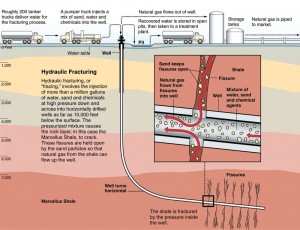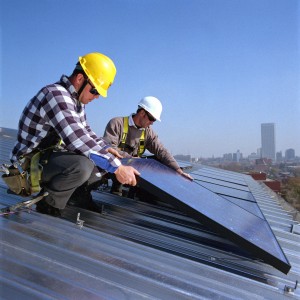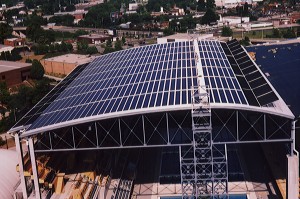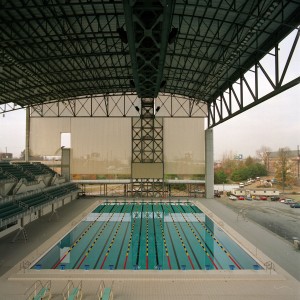Fracking is a topic that I have planned to write about at some point, but an article I received recently from a former DOE colleague has triggered this sooner-rather-than-later blog. The full article can be found at http://thinkprogress.org/climate/2013/08/02/2401591/frack-gag-for-kids).
In my opinion it identifies the deceptiveness, stupidity and cluelessness of some people in the fracking industry. It also identifies the critical need for careful regulation of this rapidly emerging technology. Here I quote only the opening words of the article:
“When drilling company Range Resources offered the Hallowich family a $750,000 settlement to relocate from their fracking-polluted home in Washington County, Pennsylvania, it came with a common restriction. Chris and Stephanie Hallowich would be forbidden from ever speaking about fracking or the Marcellus Shale. But one element of the gag order was all new. The Hallowichs’ two young children, ages 7 and 10, would be subject to the same restrictions, banned from speaking about their family’s experience for the rest of their lives.
The Hallowich family’s gag order is only the most extreme example of a tactic that critics say effectively silences anyone hurt by fracking. It’s a choice between receiving compensation for damage done to one’s health and property, or publicizing the abuses that caused the harm. Virtually no one can forgo compensation, so their stories go untold.”
Hydraulic fracturing is the fracturing of rock by a pressurized liquid. Some hydraulic fractures form naturally. Induced hydraulic fracturing or hydrofracturing, commonly known as fracking, is a technique in which water is mixed with sand and chemicals, and the mixture is injected at high pressure into a wellbore to create small fractures (typically jless than 1mm), along which fluids such as previously trapped oil and natural gas (methane) may migrate to the well. When hydraulic pressure is removed from the well small grains of sand or aluminium oxide hold these fractures open once the rock achieves equilibrium. The technique is very common in wells for shale gas, tight gas, tight oil, and coal seam gas and hard rock wells. It is now also being considered for use in revitalizing existing hydrogeothermal wells. The process is illustrated below:
It was first used commercially in 1998 in the Barnett Shale formation in Texas. Today it is being widely used in several shale regions in the U.S. and its use is being explored actively in many other countries. It is also a large fossil fuel resource, and according to the International Energy Agency technically recoverable resources are estimated to be 7.3 quadrillion cubic feet for shale gas, 2.7 quadrillion cubic feet for tight gas, and 1.7 quadrillion cubic feet for coalbed methane. Current annual global consumption of natural gas is abour 120 trillion cubic feet.
My feelings about shale gas fracking are mixed and are based on my study of water issues, reading the growing literature on fracking, talking with knowledgeable people, listening to speakers at technical conferences, and my view of human nature. Here is how I see the issues:
– wells drilled into gas-rich shale deposits are usually quite deep, well below the underground aquifers supplying fresh water.
– the quantities of water required are large (millions of gallons per well) and create a huge demand on local water supplies.
– major problems with fracking occur when the injected water is returned to the surface and has to be cleaned up or disposed of. Here is one place where extraction companies are tempted to take shortcuts to reduce costs.
– the returned water not only has added chemicals that facilitate the fracturing but also heavy metals, uranium, and other contaminants that it releases from the shale along with the trapped methane. Without these ‘additives’ the water could be returned to reservoirs or reused, but that is not the case. The water with fracking chemicals can be reinjected for reuse in further fracking, but to avoid the build-up of heavy metals and radioactivity these other ‘additives’ have to be removed and disposed of carefully. This costs money. Even returning the drilling water to reservoirs and other non-fracking uses requires water decontamination, again a costly process.
– here is where I get wary of human behavior. The easiest and least costly thing to do with returned water is dump it in nearby lakes and streams when no one is watching, which I suspect is occasionally done. Water handling and cleanup costs are a major operating expense. Contaminants can disturb ecosystems and eventually get into drinking water, which is why many people oppose fracking.
– another problem with fracking is leakage of methane from wellbores that are not fully sealed (again a cost issue), and from other underground cracks induced by the hydrofracturing that lead methane away from the wellbore. This kind of leakage has been blamed for the water supplies in homes that seem to be saturated with methane and can be ignited.
– in addition, the use of trucks to haul in fracking water, return to their water sources, and, if necessary, remove the returned water, creates a lot of heavy traffic that is disturbing to communities along the way.
However, fracking is not all bad. There is lots of shale gas ‘down there’ (decades worth), prices for natural gas have come way down, natural gas can be substituted for coal in power generation (and releases less carbon dioxide per unit of energy produced), and the prospect of long-term supplies of low-cost natural gas is beginning to attract industries back to the U.S. from overseas locations. Natural gas can also be used in transportation as a compressed fuel or a starter chemical for alternative liquid fuels, reducing our dependence on imported oil.
Putting all this together, where do I personally come out on fracking? It is a highly visible and controversial issue on which well-meaning people can disagree, and I have family and friends who will disagree with what I am going to say. My view is strongly influenced by the fact that I have lived and observed human behavior over many years.
Simply put, I believe that much (too much) of human behavior is driven by financial imperatives (making money), but that is the nature of our economic system. It aligns with an all too prevalent human focus on self interest, a focus we share with many other animals. This is not always the case, and we can all give many uplifting counterexamples, but it is common enough. Given my ”skepticism’ I believe that commercial mining of shale gas is here to stay for at least the next several decades in the U.S. and other countries because of the attractive financial returns that can be obtained. In that sense I think about shale gas in the same way I think about our failure to restrict illegal drug sales – there is is simply too much money to be made to stop it. There are also national interests in having an indigenous energy resource.
Accepting this as my view of reality, and weighing the pros and cons, I conclude that the only option is to create and enforce a strict regulatory regime at federal, state and local levels for fracking. Fracking gas is creating a new ‘natural gas era’ in the U.S. and elsewhere and we will have to deal with it in as safe a manner as possible. Threats to ecosystems and water supplies are serious threats and require our utmost attention. Given the costs involved in addressing the cons I expect some attempted shortcuts and ‘accidents’, but that’s an inevitable part of supplying energy needs. It is society’s job to create disincentives for these shortcuts, educate the public about the threats, and keep the pressure on companies and government officials to adhere to and enforce the regulations.
I encourage your thoughts on this complicated issue. Just be nice!





